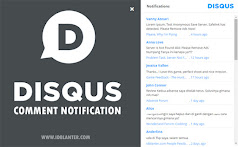Posted by Missy Krasner, Product Marketing ManagerEvery day, people use Google to learn more about an illness, drug, or treatment, or simply to research a condition or diagnosis. We want to help users make more empowered and informed healthcare decisions, and have been steadily developing our ability to make our search results more medically relevant and more helpful to users.
Although we have some talented people here with extensive backgrounds in health policy and technology, this is an especially complex area. We often seek expertise from outside the company, and health is no exception. We have formed an advisory council, made up of healthcare experts from provider organizations, consumer and disease-based groups, physician organizations, research institutions, policy foundations, and other fields. The mission of the Google Health Advisory Council is broadly to help us better understand the problems consumers and providers face every day and offer feedback on product ideas and development. It's a great privilege for us to work with this esteemed group
Google Health Advisory Council(Institutions or affiliations are listed for identification purposes only.)Chairman
Dean Ornish, M.D., Founder and President, Preventive Medicine Research Institute, Clinical Professor of Medicine, University of California, San Francisco
Douglas Bell, M.D., Ph.D., Research Scientist, RAND Health, RAND Corporation
Delos M. Cosgrove, M.D., Chief Executive Officer, The Cleveland Clinic
Molly Coye, M.D., M.P.H., Chief Executive Officer, HealthTech
Dan Crippen, Former Congressional Budget Office Director & Reagan White House Assistant
Linda M. Dillman, Executive Vice President, Risk Management, Benefits and Sustainability, Wal-Mart
John Halamka M.D., M.S., Chief Information Officer, Beth Israel Deaconess Medical Center & Harvard Medical School and Chairman, Healthcare Information Technology Standards Panel (HITSP)
Bernadine Healy M.D., Former head of the National Institutes of Health (NIH), Health Editor & Columnist, U.S. News & World Report
Bernie Hengesbaugh, Chief Operating Officer, The American Medical Association (AMA)
Douglas E. Henley, M.D., F.A.A.F.P., Executive Vice President, American Academy of Family Physicians (AAFP)
David Kessler, M.D.,Former FDA Commissioner, Vice Chancellor-Medical Affairs & Dean, School of Medicine, UCSF
John Lumpkin M.D, Senior Vice President, Director of Health Care Group, Robert Wood Johnson Foundation
John Rother, Group Executive Officer of Policy & Strategy, AARP
Anna-Lisa Silvestre, Vice President, Online Services, Kaiser Foundation Health Plan, Inc.
Greg Simon, J.D., President, FasterCures
Mark D. Smith, M.D., MBA, President & Chief Executive Officer, The California HealthCare Foundation
Paul Tang, M.D., Internist & Vice President, Chief Medical Information Officer, Palo Alto Medical Foundation (PAMF) & Chairman, Board of Directors, American Medical Informatics Association (AMIA)
Sharon Terry, M.A., President & Chief Executive Officer, Genetic Alliance
John Tooker, M.D., MBA, F.A.C.P., Executive Vice President & Chief Executive Officer, American College of Physicians (ACP)
Doug Ulman, President, Lance Armstrong Foundation
Robert M. Wachter, M.D., Professor of Medicine, University of California-San Francisco (UCSF); Associate Chairman, UCSF Department of Medicine; Chief of the Medical Service, UCSF Medical Center
Matthew Zachary, Cancer Patient Advocate, Founder & Executive Director, The I'm Too Young for This! Cancer Foundation for Young Adults
Update: Added links to two more bios.















.jpg)

